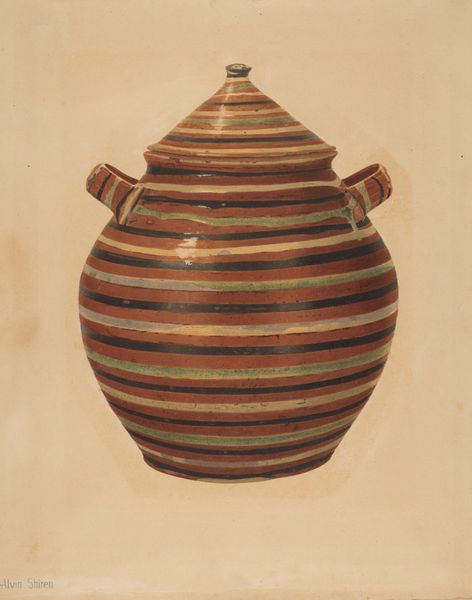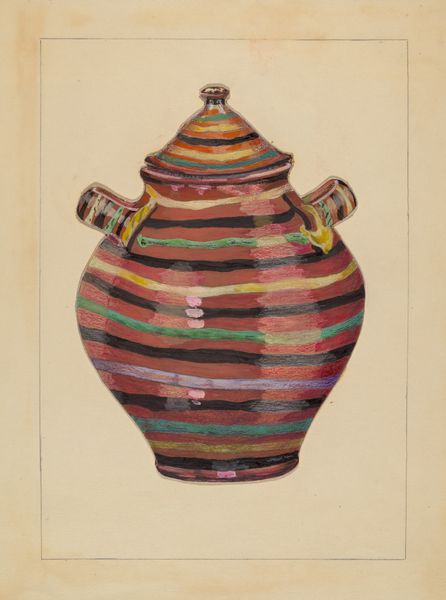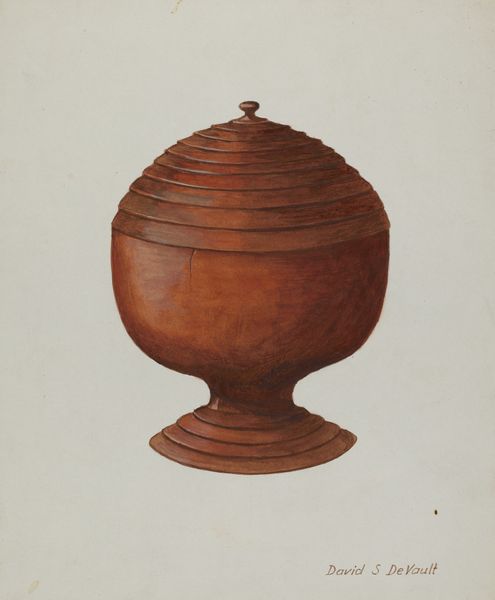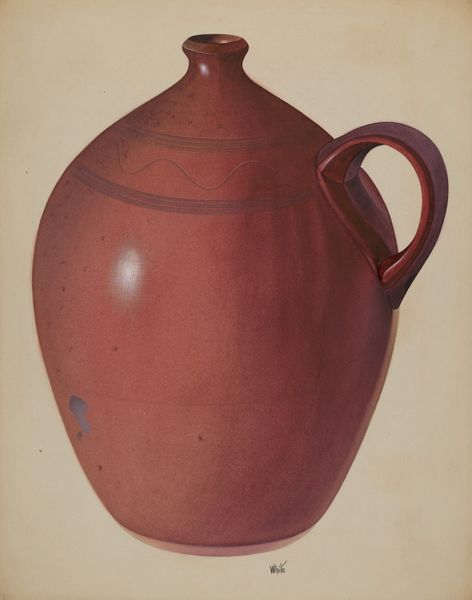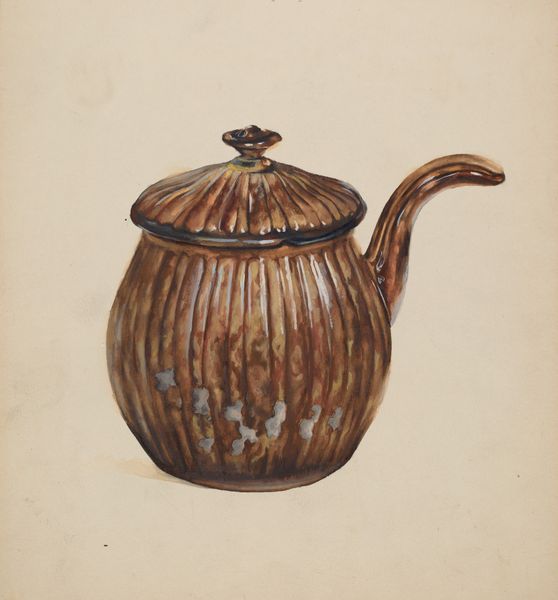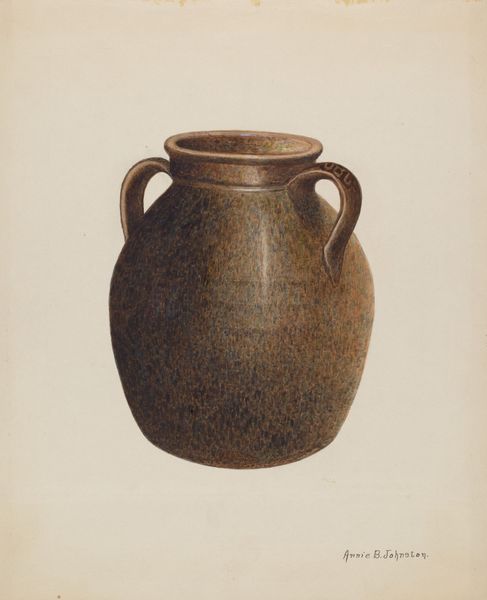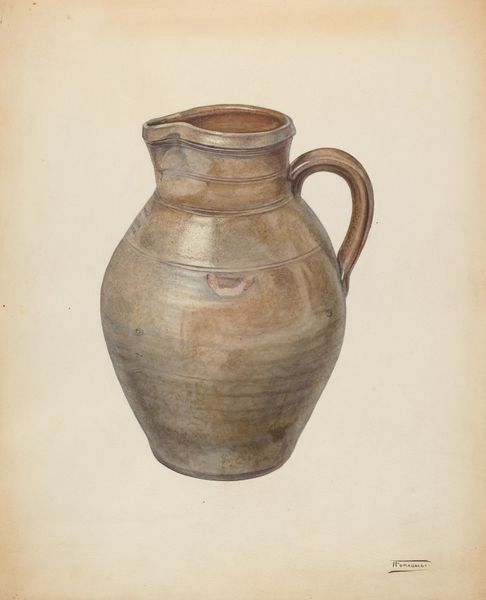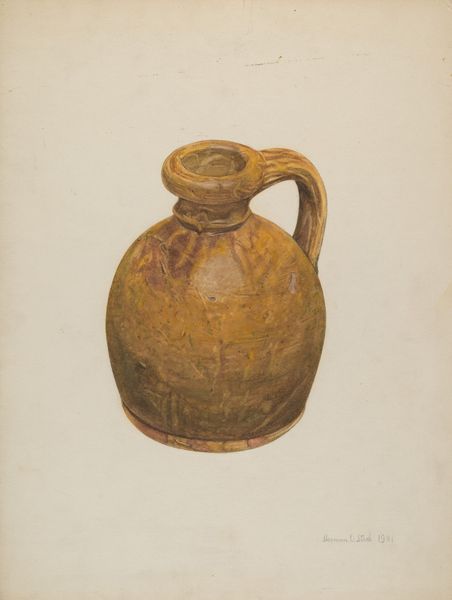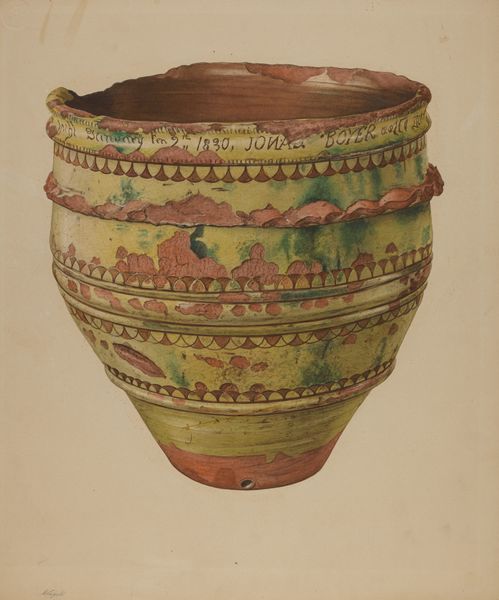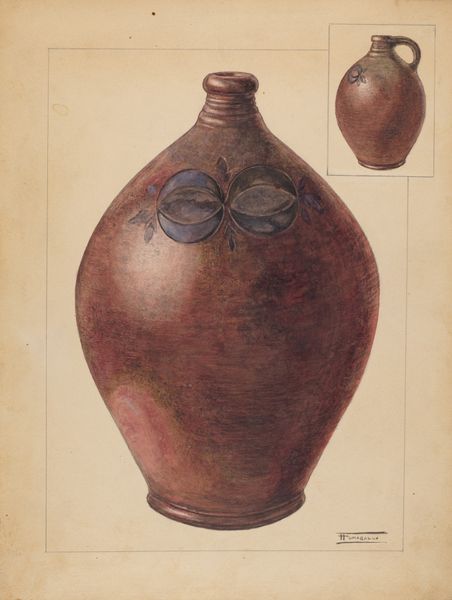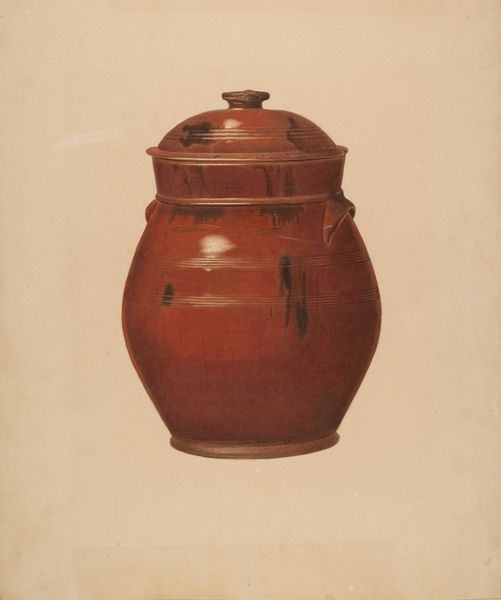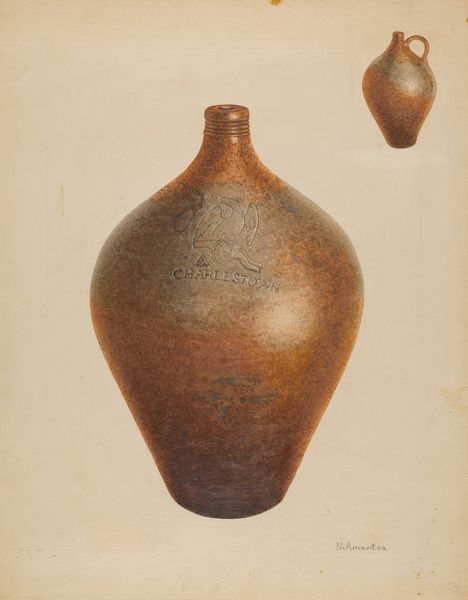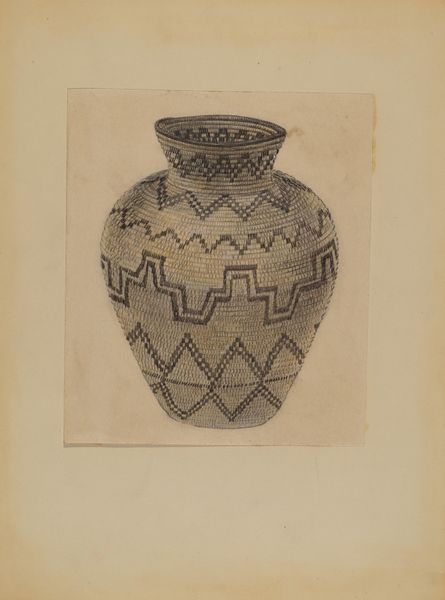
drawing, painting, watercolor
#
drawing
#
painting
#
oil painting
#
watercolor
#
geometric
#
orientalism
#
watercolor
Dimensions: overall: 27.9 x 23 cm (11 x 9 1/16 in.) Original IAD Object: 12 3/4" high; 10" wide
Copyright: National Gallery of Art: CC0 1.0
Curator: This watercolor piece, likely dating to around 1938, is called "Jar with Cover," and is attributed to Alvin Shiren. Editor: It’s striking, isn't it? The combination of colors and geometric patterns creates a vibrant energy. I’m immediately drawn to the textures implied in those stripes – they speak of the labour involved in creating such intricate detail. Curator: Shiren seems to have been deeply interested in global design. The jar form and the striped decorations suggests an interest in global craft, specifically those that gained popularity within the Western art world at that time. The lack of definitive background detail places the emphasis squarely on the jar itself, encouraging viewers to consider its function as a decorative rather than functional object. Editor: That interest in global forms and their adaptation speaks volumes about the period, about a romanticized exoticism filtering into Western artmaking. I see how the meticulous layers of watercolour achieve depth. The hand of the artist is very present; the stripes aren't mechanically perfect. They possess the appealing irregularities of something handcrafted. Curator: Exactly. Consider the rise of ethnographic museums during this period. Artists were increasingly exposed to and, in many cases, appropriated objects from different cultures. Shiren's work may reflect these broader cultural trends. This interest certainly reshaped the art market itself, creating demand for works that were informed by this vision. Editor: And that makes you think about what is considered high art. I love that Shiren elevates a utilitarian form, potentially questioning the boundaries of the art world. What labour practices informed similar ceramic creations, and how does representing that in watercolour impact perception? Curator: Absolutely. By bringing a craft tradition into a fine art medium, the work plays with hierarchies and raises intriguing questions about cultural value and representation in the late 1930s. Editor: Thinking about process makes me consider not just the hand, but also the artist's eye, capturing the unique details in a seemingly simple object. Curator: Indeed, Shiren provides a compelling reflection on how artistic interpretations both shape and are shaped by the times. Editor: An intriguing and challenging painting, raising ideas about process and social influences within a relatively straightforward still life.
Comments
No comments
Be the first to comment and join the conversation on the ultimate creative platform.
